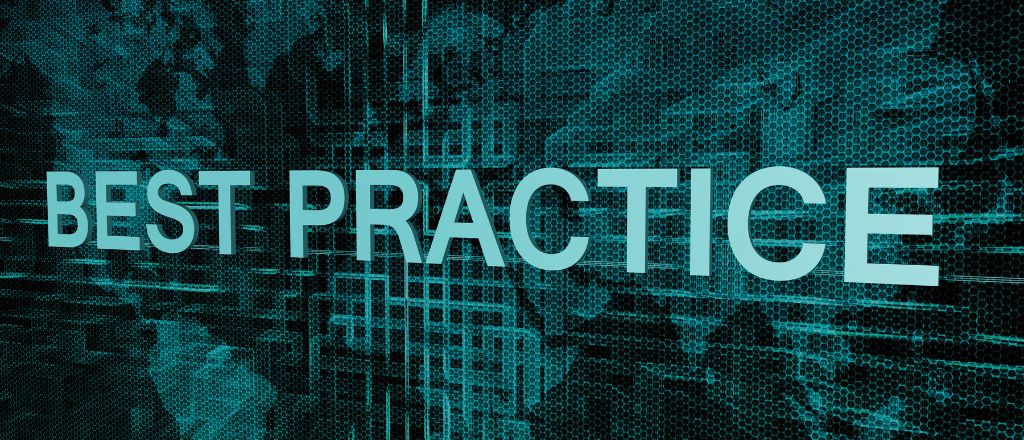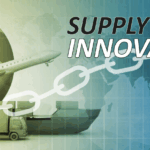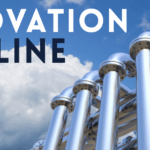Technology discovery and scouting are essential activities for enterprise innovation programs and R&D departments to identify emerging technologies, startups, and market trends that can drive competitive advantage. Ezassi, a leader in open innovation management services, offers robust solutions for technology discovery and tech scouting reports, leveraging AI-powered tools and expert-driven processes to deliver actionable insights.
Understanding Technology Discovery
Technology discovery or tech scouting focuses on identifying emerging technologies, scientific breakthroughs, or market trends that could disrupt industries or open up new opportunities. Ezassi’s technology discovery services are designed to uncover these opportunities through tailored research programs.
These projects include Trend Scan Reports, Technology Scouting Reports, Technology Landscape Reports, and Horizon Scans.
Each report provides unique insights ranging from short-term tactical solutions to long-term strategic planning.
LEARN MORE:
Technology Scouting Process
Research Reports to Support Innovation
Best Practices for Technology Discovery and Scouting
The Benefits of Choosing Ezassi Research Services
Ezassi’s Technology Scouting Process
Ezassi follows a structured approach to technology scouting that ensures comprehensive coverage of innovation opportunities:
- Defining Objectives: The process begins by aligning with the client’s strategic goals, whether it’s solving a specific business challenge, exploring adjacent markets, or identifying white-space opportunities.
- Data Collection: Using AI-powered search automation, Ezassi scouts global databases for relevant technologies, startups, patents, and academic research. This ensures a broad yet targeted exploration of potential solutions.
- Expert Engagement: Ezassi curates a network of subject matter experts (SMEs) to validate findings and provide deeper insights into the viability of identified technologies.
- Analysis and Reporting: Insights are synthesized into actionable reports tailored to the client’s needs:
- Trend Scan Reports offer quick overviews of emerging trends.
- Technology Scouting Reports identify specific solutions or partners.
- Technology Landscape Reports provide a strategic overview of market dynamics.
- Horizon Scans look 10 years ahead to forecast disruptive innovations.
- Recommendations: Each report includes actionable recommendations for partnerships, investments, or internal development strategies.
Vetting Technology Solutions Before Commitment
Proper vetting of technology solutions is a critical step to ensure successful implementation and avoid costly surprises down the road. Cutting corners here can result in selecting a tool that fails to meet your organization’s needs or creates more headaches than it solves.
To thoroughly evaluate a new technology, follow these best practices:
- Needs Assessment: Start by detailing the must-have features and integration requirements to align the tool with your workflows and strategic objectives.
- System Compatibility: Verify that the solution will work seamlessly with your existing platforms and infrastructure to prevent integration issues later.
- Limitations and Scalability: Identify any restrictions in functionality, licensing, or scalability that could impact future expansion or workflow.
- Peer Insights: Seek out case studies, industry reviews, and direct feedback from current users. Sites like Gartner Peer Insights and G2 can provide valuable perspectives.
- Hands-On Testing: Arrange live demos or trial periods to experience the tool first-hand. This step is essential to gauge usability and fit within your specific environment.
- Stakeholder Input: Involve key team members in the evaluation process to ensure all necessary perspectives are considered.
By approaching technology selection with a comprehensive review process, you significantly reduce the risk of adopting solutions that miss the mark, ensuring your chosen platform delivers the intended value.
Which Ezassi Research Report is Best for your Goals?

Trend Scan Reports
Trend Scan Reports are designed to provide a quick snapshot of emerging technologies and market trends that could impact an organization’s innovation strategy. These reports are typically delivered within 10 business days, making them ideal for organizations seeking rapid insights into opportunities. Trend Scans focus on identifying technologies that align with current objectives and highlight areas for immediate exploration or investment.
Key Features:
- Rapid delivery for quicker decision-making.
- Focus on emerging trends relevant to the organization’s industry.

Technology Scouting Reports
Technology Scouting Reports offer a deeper dive into specific solutions, startups, patents, or subject matter experts that can solve targeted business challenges. Delivered within 3–4 weeks, these reports provide tactical research tailored to the organization’s needs, helping identify advancing technologies or leading innovators worldwide.
Key Features:
- Comprehensive analysis of specific technologies or solutions.
- Identification of startups, patents, and SMEs relevant to the challenge.
- Tactical recommendations for partnerships or integration.

Technology Landscape Reports
Technology Landscape Reports provide a strategic overview of market dynamics, competitive threats, and investment opportunities within a particular technology domain. These reports take 6–8 weeks to complete and are ideal for organizations looking to understand the broader ecosystem surrounding a technology or innovation area.
Key Features:
- Strategic analysis of market trends and competitive positioning.
- Insights into adjacent technologies and potential disruptions.
- Recommendations for long-term investment strategies.

Horizon Scan Reports
Horizon Scan Reports are forward-looking analyses that forecast disruptive innovations up to 10 years ahead. These reports are designed for organizations focused on long-term planning and strategic growth, helping them anticipate future challenges and opportunities in their industry.
Key Features:
- Long-term forecasting of emerging technologies and trends.
- Identification of white-space opportunities for innovation.
- Strategic recommendations for positioning in evolving markets.
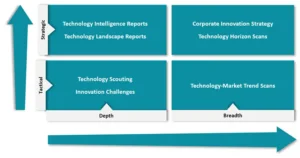
How These Reports Drive Innovation Success
Each report type serves a distinct purpose in the innovation process, enabling organizations to:
- Address immediate challenges with tactical solutions (Trend Scans and Technology Scouting).
- Strategically plan for market shifts (Technology Landscape).
- Prepare for future disruptions (Horizon Scan).
Best Practices for Technology Scouting
To maximize the value of technology discovery efforts, organizations should follow these best practices:
- Start with Clear Objectives
Establish specific goals for your technology discovery initiatives. For example, are you looking to solve immediate challenges or explore long-term growth opportunities? Ezassi’s tailored reports allow companies to address both tactical and strategic needs.
- Leverage Advanced Tools
Using AI-powered platforms like Ezassi’s ensures efficient data collection and analysis. These tools can sift through vast amounts of information to identify relevant technologies quickly saving time and resources compared to manual methods.
- Engage Experts
Subject matter experts play a critical role in validating findings and providing context-specific insights. Ezassi’s solver ecosystem connects clients with SMEs who can assess the feasibility of integrating new technologies into existing operations.
- Collaborate Across Stakeholders
Successful technology scouting requires alignment between innovation teams, R&D departments, and leadership. Regular communication and non-siloed collaboration ensures that discoveries align with organizational objectives.
To maximize results, it’s important to remember that technology adoption is not just about finding the latest tool or solution—it’s about people and process. Engage end users early in the scouting process by gathering their input and feedback on potential technologies. Their firsthand experience with daily workflows provides valuable insights, ensuring the technologies being considered truly address real pain points rather than creating new hurdles.
Consider identifying "champions" within your organization—enthusiastic early adopters who can test new technologies, help troubleshoot issues, and become advocates during rollout. These champions can facilitate broader buy-in and smooth the transition for the rest of the team.
Finally, approach technology scouting and adoption as an iterative journey, not a one-time event. Create ongoing feedback loops, encourage open communication, and be prepared to adjust course as new insights emerge. This continuous improvement mindset leads to stronger alignment across departments and better integration of technologies that support both immediate needs and long-term strategic goals.
- Empower Internal Champions
Identifying and empowering “champions” within your organization can be a game-changer for successful technology adoption. These internal advocates are often early adopters who are eager to explore new solutions and champion their benefits to others. By involving champions at the outset, organizations gain key insights from end users who are embedded in day-to-day operations.
Champions play several essential roles:
- Testing and refining new technologies in real-world scenarios before wider deployment.
- Acting as credible voices who can translate technical features into practical value for their peers.
- Surfacing feedback, troubleshooting issues early, and accelerating user buy-in across teams.
When champions are engaged, the transition to new technology becomes smoother and more collaborative. Their enthusiasm and support foster a positive culture around change—encouraging wider adoption and easing any learning curve.
- Involve End Users Early in the Process
A common pitfall in technology implementation is overlooking the people who will use the solution day in and day out. Engaging end users from the outset is essential—not only do they offer practical insights into daily pain points, but their participation ensures that new tools are genuinely effective rather than just another shiny object.
- User-Driven Feedback: By soliciting end-user feedback early, organizations can ensure the technology truly addresses workflow bottlenecks and aligns with real-world needs.
- Boosted Adoption & Engagement: Involving users creates a sense of ownership and enthusiasm, making adoption smoother and more likely to succeed.
- Iterative Optimization: Ongoing user input enables teams to make swift adjustments and optimize the system as needs evolve.
Ultimately, placing end users at the center of your technology journey bridges the gap between vision and reality—driving innovation that sticks and delivers tangible results.
- Focus on Technology Topic Scalability
Start small by targeting high-impact areas where ROI can be demonstrated quickly. For instance, Ezassi’s Trend Scan or Technology Scouting Reports can serve as short term projects before scaling up efforts with more comprehensive Landscape or Horizon Scan reports.As you consider new technology, keep scalability and future growth front of mind. It’s not just about solving today’s challenges—think about whether the platform can keep pace as your firm expands. Will it handle increased workloads, support more clients, and adapt to new features down the road?Choosing a flexible solution from the outset means you can grow without having to replace core systems every time you reach a new milestone. By planning for scalability early, you’ll save yourself from unnecessary headaches and tech overhauls as your needs evolve.
- Monitor Trends Continuously
Innovation is an ongoing process. Regularly updating your understanding of market trends and supporting the innovation pipeline through tools like Ezassi’s Innovation Management Platform ensures your organization remains informed, collective knowledge is secured, and project teams stay ahead of disruptions in your industry.
Just as importantly, it’s essential to view technology scouting and implementation as an iterative journey rather than a one-time event. The first rollout is rarely perfect—expect a few bumps along the way. By embracing a continuous improvement mindset, teams can test new approaches, gather feedback, and refine their strategies. Creating a feedback loop allows users and stakeholders to share insights at every stage, so adjustments can be made proactively, issues are addressed before escalating, and solutions evolve to better serve your organization’s needs.
This commitment to ongoing evaluation and adaptation not only strengthens your innovation pipeline but also empowers your teams to respond nimbly to emerging opportunities and challenges.
Common Pitfalls to Avoid During Technology Implementation
Even with the best intentions, organizations often stumble into avoidable traps when rolling out new technology. Learning from these frequent missteps can help you sidestep unnecessary headaches and maximize your investment.
- Neglecting End-User Input:
One of the biggest mistakes? Assuming a tool will succeed just because it checks all the boxes on paper. Skipping stakeholder feedback risks deploying a solution that doesn’t actually solve end-user pain points—or worse, creates new ones. Engage the individuals who will use the technology from the outset to ensure strong alignment and adoption. - Underestimating Total Costs:
It’s all too easy to focus on sticker price and overlook implementation expenses lurking beneath the surface. Proper budgeting should reflect not only the license fee, but also integration with existing systems, staff training, ongoing support, and any additional hardware or infrastructure. Surprises here can result in budget overruns and stalled projects. - Insufficient Solution Vetting:
Jumping into an agreement without comprehensive research is risky. Vet potential solutions by arranging product demos, checking references, and consulting industry reviews from sources like Gartner or Capterra. Pay attention to compatibility with your current environment and be clear-eyed about any limitations that could inhibit scalability or flexibility. - Siloed Decision-Making:
Rolling out a new platform shouldn’t be a top-down decree. Avoid making critical decisions in a vacuum. Instead, foster collaboration between IT, operational teams, end-users, and leadership to ensure broad-based buy-in and effective integration across functions. - Lack of Post-Launch Support:
Finally, successful implementation doesn’t end at go-live. Plan for continued training, knowledge-sharing, and robust support channels to address user questions or issues swiftly. Sustained engagement is critical for realizing the technology’s long-term value and maintaining momentum within your teams.
The Value of Testing Integration Capabilities Early
Before rolling out new software across your organization, validating its integration with current systems is a crucial step. Skipping this process can lead to unforeseen headaches—think disconnected databases, inconsistent workflows, and increased manual entry that opens the door to errors and inefficiencies.
Careful testing ensures the new technology communicates effortlessly with platforms like Salesforce, QuickBooks, or Asana, creating a seamless digital ecosystem. This proactive approach not only streamlines daily operations but also preserves data accuracy and team productivity. Ultimately, making integration testing a standard part of your implementation strategy sets the foundation for smooth adoption and maximizes the return on your technology investment.
Safeguarding Data Integrity and Security During Technology Implementation
As your organization explores and integrates new technologies, maintaining robust data integrity and security should be treated as a foundational requirement—rather than an afterthought. No matter how innovative a solution may be, success hinges on the protection and accuracy of critical information.
Key Considerations:
- Encryption and Access Control
Prioritize solutions that utilize modern encryption protocols, such as AES-256, to secure data both at rest and in transit. Layered authentication and user-specific access controls further ensure that only authorized individuals can interact with sensitive records. - Compliance with Industry Standards
Opt for platforms that align with global compliance frameworks like ISO/IEC 27001, SOC 2, or GDPR. Regular third-party audits and transparent data handling policies can give peace of mind that the platform meets regulatory requirements for your sector. - Routine Backups and Disaster Recovery
Implement regular data backup schedules using automated systems, and verify that your provider supports rapid restoration in case of hardware failure, accidental deletion, or cyberattack. Test disaster recovery procedures periodically to minimize downtime and data loss. - Continuous Security Monitoring
Engage tools that offer real-time monitoring and threat detection, such as those provided by CrowdStrike or Splunk. Proactive alerts and frequent vulnerability assessments can help you stay one step ahead of evolving cyber threats.
In short, from the outset of technology implementation, integrating these security measures will not only protect organizational assets but also ensure compliance, build stakeholder trust, and safeguard your innovation pipeline for the future.
Why Choose Ezassi for R&D Support Services?
Ezassi researchers stand out in the competitive landscape of technology scouting services due to our comprehensive offerings:

AI-Powered Search Automation
Streamlines the process of identifying relevant technologies across global databases.

Customizable Reports
Tailored insights ensure alignment with specific business needs.
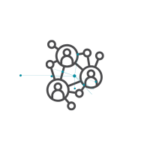
Access to SMEs enhances the quality of analysis.

End-to-End Support
From initial discovery to actionable recommendations, Ezassi provides full-service support for enterprise innovation programs.
Ezassi’s breadth of services—from tactical trend scans to forward-looking horizon scans—makes us an ideal partner for organizations looking to integrate cutting-edge technologies into their innovation strategies, faster.
Technology discovery is a critical component of successful enterprise innovation programs. By leveraging Ezassi’s AI-powered tools and expert-driven processes, organizations can uncover breakthrough technologies, identify strategic growth areas, and maintain a competitive edge in their industries. Ezassi empowers R&D directors and innovation professionals to make informed decisions that drive efficiency, sustainability, and long-term success in a competitive marketplace.
Implementing new technology is rarely a straightforward task, but the payoff can be significant when approached strategically. Success goes beyond simply identifying or adopting the latest tools; it’s about aligning technology with your team’s actual needs, empowering users at every level, and ensuring systems enhance workflows instead of complicating them.
Keys to Seamless Technology Integration
- Stay Flexible: The innovation landscape is always shifting. Adapt your approach as you learn, and be ready to refine processes based on feedback.
- Keep Communication Open: Foster ongoing dialogue between stakeholders—innovation teams, R&D, and leadership—so everyone is aligned and obstacles can be addressed early.
- Empower Your Teams: The true value of technology is realized when users feel confident and equipped. Prioritize training and support to drive adoption.
- Measure and Iterate: Regularly track impact and be prepared to adjust strategies to ensure technology continues to deliver ROI and support organizational growth.
When you do this right, technology becomes more than a tool—it transforms business operations, streamlines decision-making, and opens up new growth opportunities. By partnering with Ezassi and following these principles, your organization can implement technology that truly drives innovation and positions you for lasting success.

